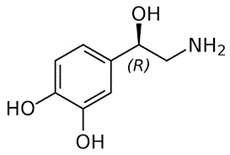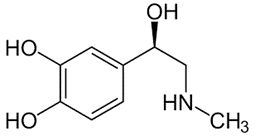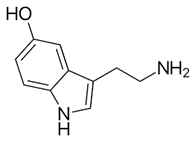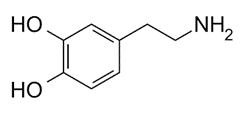
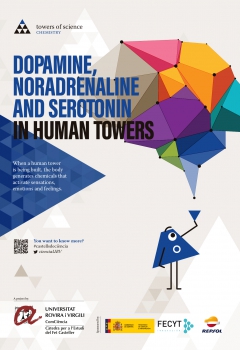 Human towers represent values such as cooperation, effort, perseverance, sacrifice, self-improvement and solidarity, and generate sensations, emotions and feelings.
Human towers represent values such as cooperation, effort, perseverance, sacrifice, self-improvement and solidarity, and generate sensations, emotions and feelings.
Sensations put us in touch with everything that happens around us. They are impressions that external stimuli produce in our consciousness and are picked up by some of our senses. Apart from the external sensations we receive, we also have internal sensations, which give us information about how we feel. All these sensations produce a feeling, which generates an emotion. Feelings are defined as the physiological response to the emotion we have received. In other words, they are the way we interpret these emotions.
We often tend to think that chemistry only exists in materials or in a variety of external processes, but numerous chemical reactions and processes take place inside the human body: from cognitive reactions in the brain to the generation of energy. Some of these processes are what we know as sensations, emotions and feelings, without which human towers are impossible.
While they are building a human tower, the team experiences many different emotions and sensations. For example, the people in the core must never look at the tower for reasons of safety, but they notice and feel it. They notice if there is more movement on one side or the other, and they feel it shaking, in response to which they exert more force on one side or the other. These are sensations of touch or hearing that are translated into information that is sent to the brain by neurotransmitters, and this is pure chemistry.
Among the best-known neurotransmitters are adrenaline, noradrenaline, dopamine and serotonin.
|
Adrenaline |
Noradrenaline |
|
Dopamine |
Serotonine |
Adrenaline, "the substance of activation", is a hormone and neurotransmitter that is involved in situations in which we must be alert and active, both physically and psychologically. It triggers survival mechanisms that are set in motion in emergency situations when danger is perceived or reactions must be quick.
In response to a stressful stimulus, adrenaline gives us a quick boost and increases our energy so we can escape from danger. Breathing, pulse and heart rate accelerate so that our muscles respond more quickly to the situation. The pupils dilate, the blood circulates at a higher speed and is moved away from the digestive system to prevent vomiting. In general, the whole body prepares itself to react quickly to certain stimuli.
When human towers are being built, the sound of the music activates the adrenaline, and the tower builders undergo a series of physiological changes caused by stress, the function of which is to prepare the body for the physical and mental effort to come. When a person is in a dangerous situation, the hypothalamus, which is located in the brain, orders the adrenal glands to release stress hormones into the circulatory system. This dilates the air passages so that they can take in more oxygen and increases the heart rate and blood pressure so the heart beats faster and harder. Thanks to this, the muscles and the brain receive enough blood with the oxygen, glucose and fatty acids necessary to function. The body responds in seconds and the physical reaction is powerful and instant. This is popularly known as the "adrenaline rush" and it greatly increases the force available.
The hormones adrenaline and cortisol are associated with stress and prepare the body at moments of greater intensity when it is necessary to be alert. In stressful situations, because the level of cortisol increases, the amount of sugar in the blood also increases and the immune system is suppressed to save energy and help metabolize fats, proteins and carbohydrates. This is just as it should be for one specific moment, but not for stressful situations that are part of our everyday life. The release of sugar into the blood maintains an appropriate level of energy to respond effectively to stress and keeps us alert. Adrenaline in the brain sends the signal to release glucose into the blood, but cortisol synthesises it and uses fats and proteins as energy substrates.
Noradrenaline plays a special role in maintaining attention. It activates excitation in the cerebral cortex and this helps to monitor the environment. Thus, the brain selects relevant information and separates it from irrelevant information to improve the performance of goal-oriented tasks.
This neurotransmitter intervenes not only in how we experience our consciousness and subjectivity, but also in other objective aspects such as how we manage our attention and, therefore, how we perform when building human towers. Both processes are related, since attention cannot be managed if there is no awareness. Thus, when a human tower is not going well and is in danger of falling, noradrenaline is released, which reinforces attention in risky situations.
The part played by noradrenaline is not restricted to transmitting brain messages; it also has an effect on the heart muscles. In particular, it acts by increasing heart rate and vascular tone, which in turn increases blood pressure. This is one of the ways in which noradrenaline influences our body through the autonomic nervous system, which is responsible for those automatic activities necessary for survival in real time.
Thus, noradrenaline has an effect on motivation and the energy state, so that it actively participates with dopamine in the regulation of learning, memory and the feeling of reward.
Dopamine is usually associated with pleasure. For example, when a human tower is completed, it is secreted and accentuates the joy we take from the success. High levels improve motivation and mood. Low levels produce demotivation and indecision. It is involved in coordinating certain muscle movements and in the cognitive processes of learning, and has even been seen to play an important role in decision-making. It is also related to the taste for strong emotions, since the greater presence of dopamine in some brain regions in adolescents makes them too optimistic with their expectations, so they run too many risks. These aspects are fundamental when building a human tower.
Dopamine encourages us to be competitive, to defend ourselves from danger and to reach our goals. One of its functions is to manage the brain's reward system. This means that when we do things that our body values as beneficial, dopamine is released. This creates a subjective feeling of pleasure that prompts us to repeat these behaviours.
Serotonin can be found in large quantities in many parts of our body, so a general imbalance in the production of this substance can have drastic effects on various factors that affect the way we feel and behave. It also stabilizes the emotional state of the human being in stressful situations and, together with other neurotransmitters such as dopamine and noradrenaline, participates in the mechanisms that govern anxiety and fear, among other feelings. In the world of human towers, serotonin is particularly effective before performances. It acts by stabilizing our emotional state when we are about to build a human tower and makes us feel that we are up to the challenge.

